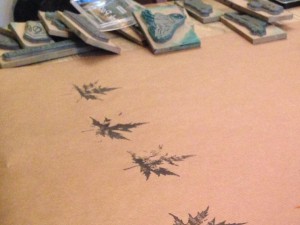One of my favourite Christmas gifts this year was a copy of Barry Miles’s book London Calling: a countercultural history of London since 1945. It’s a very good book to read on the tube—whilst squashed up in communal but often uncomfortable proximity to one’s fellow citizens—but also a wonderful book to read if you happen to work anywhere near to Soho, Fitzrovia or, of course, Bloomsbury.
Reading this, I’ve been struck by the proximity to some of the stories told by our participants in the Bloomsbury Festival in a Box project. Our participants, some of them in their 80s and 90s, have lived in central London for many years. They have told us stories of living in Soho in the 1960s, and of seeing the recently deceased Peter O’Toole (‘he was always drunk’) staggering his way from pub to pub. They have told us stories of smoky dance halls and after-hours clubs where, newly arrived in the UK, they used to go dancing. One participant, a former costume maker, recalled being introduced to Quentin Crisp in the 1960’s, and being shocked by his blue-rinse hair, ‘shaky make-up’ and painted toenails.
Ageing & the Counterculture
The connections are striking, and the personal testimonies and reminiscences of these participants have helped to make present what can seem like a very distant cultural world. Many of the people described vividly in Miles’s history of the counterculture are now dead of course, some of them quite recently, such as O’Toole, and many of them hastened along the way by the very lifestyles that made them memorable. One of those who survived into the last decade though, and who features prominently in Miles’s history, is the Liverpool-born jazz-singer, raconteur and surrealist George Melly. Often remembered as a rather cuddly ‘national treasure’ eccentric, Melly comes across here as an intelligent, cultured and erudite commenter on an often disordered and ‘deranged’ cultural milieu.
Dementia & Surrealism
In his later life Melly (who died in 2007) suffered from Alzheimer’s disease, and spent his final years as a campaigner raising awareness of the condition. Although then again perhaps ‘suffered’ is not the best way of putting this. Self-reflective to the end, Melly apparently commented that, ‘As a surrealist, I quite enjoy having dementia’.
This comment has generally been taken as glib, if brave, gallows humour. But I wonder whether there might be a more serious point here. Surrealists and counter-culturalists grow old, as we all do, and they suffer from bad health and unreliable memories. But might a ‘surrealist’ attitude—accepting of chance and contingency, open to disordered and non-linear conceptions of time, space and narrative, receptive to the fluid nature of subjectivity and the intrusion of dream into the sphere of everyday life— make living with dementia a more bearable experience? Might surrealism be of use to those living with, thinking about, and ‘treating’ the condition?
It’s a big question, but one that is increasingly presenting itself on the fringes of my research. It relates to the broader and more central question that is at the heart of the ‘Festival in a Box’ project. That is, of course, whether cultural and artistic experience, participation and education, can enrich our experience of illness, as well as our everyday lives. Focussing this question through specific veins in art history and theory, such as surrealism, might help to provide some answers.

